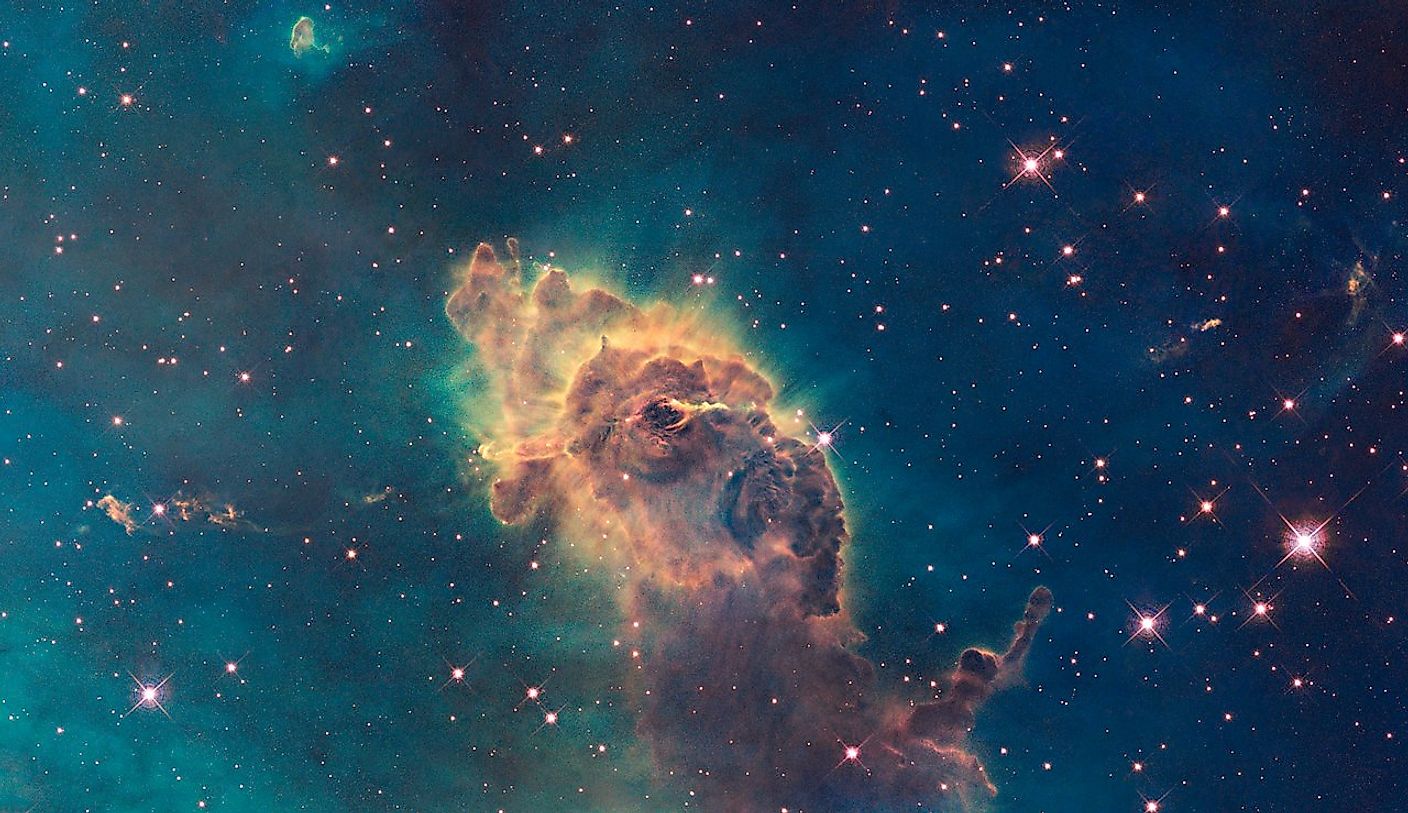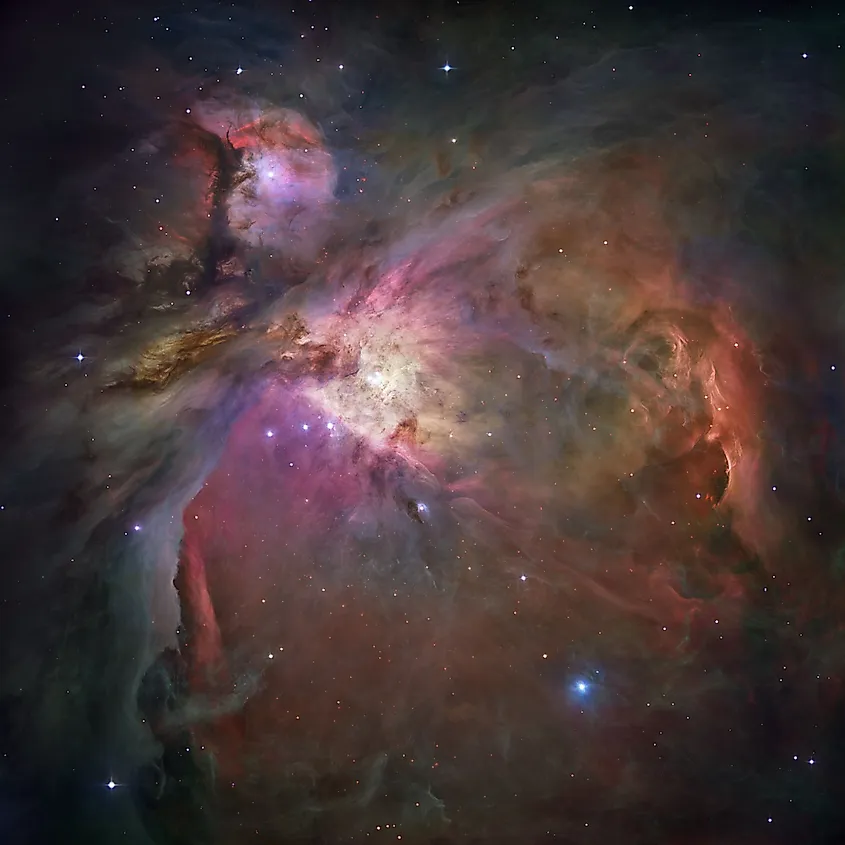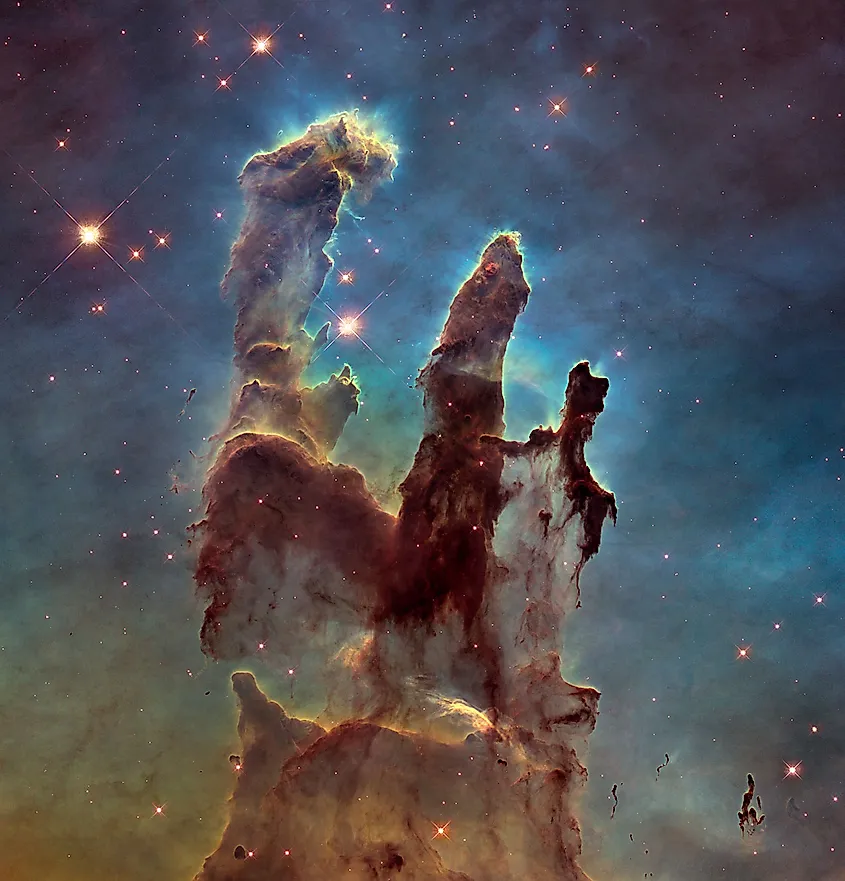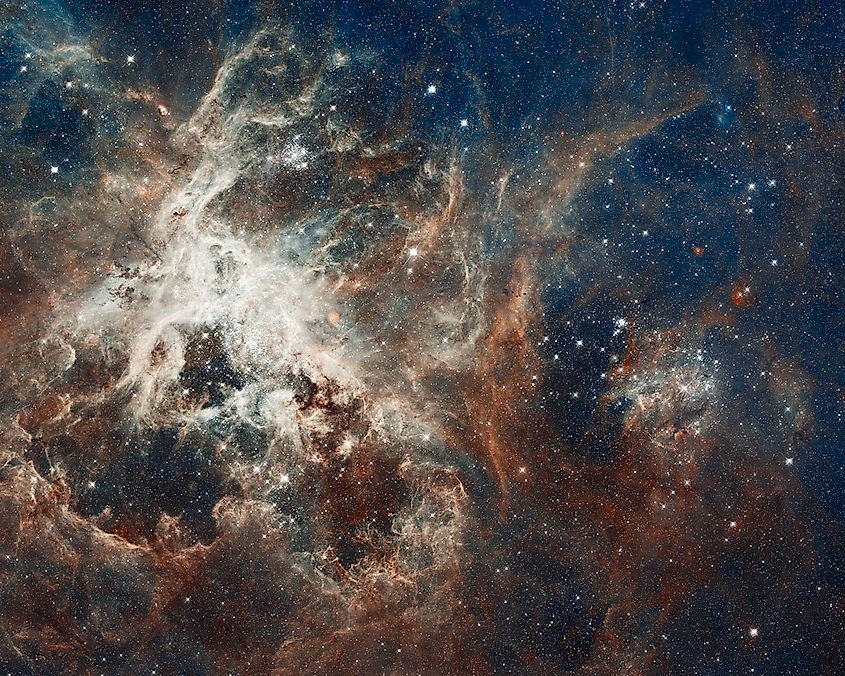
How Do Stars Form?
On a clear night, look out in any direction you choose and you will see a multitude of stars. Even during the day, our world is bathed in starlight from the sun. Without stars, planets and life itself simply could not exist. To us, the stars may seem eternal and unchanging. The night sky above has remained virtually unchanged for thousands of years. Despite appearances, however, the stars are not eternal. Rather, stars form, exist, and eventually cease to exist, all of which occurs over a time period so vast that it is impossible for our minds to truly grasp. Even the sun had a beginning, and one day it will have its end. Star formation is one of the most studied areas of astronomy, and it not only allows us to understand how the sky above came to be, but also how our world, and life itself, came to be. How do stars form and where do they form?
Stellar Nurseries

Stars are born within vast clouds of interstellar gas called nebulae, sometimes referred to as “stellar nurseries”. Nebulae are primarily composed of two ingredients: hydrogen and helium. Hydrogen and helium are the simplest, most common elements in the universe, and every star is composed mostly of these two ingredients. Although stars vary in size, mass, brightness, and temperature, every star begins its life in virtually the same way. It all begins within a nebula, where vast amounts of hydrogen gas come together to form a gigantic stellar nursery. Normally, this interstellar gas exists in a state of equilibrium, wherein the pressure of the gas counteracts the force of gravity. When this equilibrium is broken, however, and gravity takes over, the gas cloud undergoes a process of gravitational collapse. Hydrogen clumps together, further increasing the mass and thus the force of gravity as well. As gravity becomes stronger, the hydrogen gas cloud can draw in even more material, causing the process to become exponential. The gas cloud soon becomes a protostar, and in order for it to become a true star, one more step has to occur: nuclear fusion.
Nuclear Fusion

Nuclear fusion is the process by which individual atoms are fused together to generate energy, not to be confused with nuclear fission, which involves breaking atoms apart to produce energy. Nuclear fusion is one of the most energetic processes in the cosmos, so powerful in fact that it powers the stars themselves. Once a protostar within a nebula becomes massive enough and hot enough, individual hydrogen nuclei will be fused together to eventually produce helium. During this process, a tremendous amount of energy is released that counteracts the inward pull of a star’s gravity. Once nuclear fusion occurs, a star bursts into light, evolving from a protostar into a main sequence star. So long as a star continues fusing nuclei within its core, it remains a main sequence star.
Lifespan

The process of star formation can take many millions of years to unfold, yet it is only the beginning of a long story. Once a star forms, the amount of time it exists for will be dependent upon its mass. The more massive a star, the shorter its lifespan. This may seem counterintuitive, since more massive stars contain more fuel than lower mass stars. However, how long a star exists for is not dependent on the amount of fuel it has, but rather, the rate at which it consumes that fuel. High mass stars burn through their supply of hydrogen at a far higher rate than low mass stars, and so their lifespans are significantly shorter. Shorter is actually somewhat of an understatement, since the difference in lifespan between the most massive stars and the least massive stars is many trillions of years. The most massive stars shine bright and live fast, exhausting their supply of hydrogen fuel in as a little as 10-million years. Meanwhile, the least massive stars, called red dwarfs, will continue fusing hydrogen in their cores for hundreds of billions to even trillions of years. In fact, red dwarfs will exist for so long that every single one in the universe is considered young.











